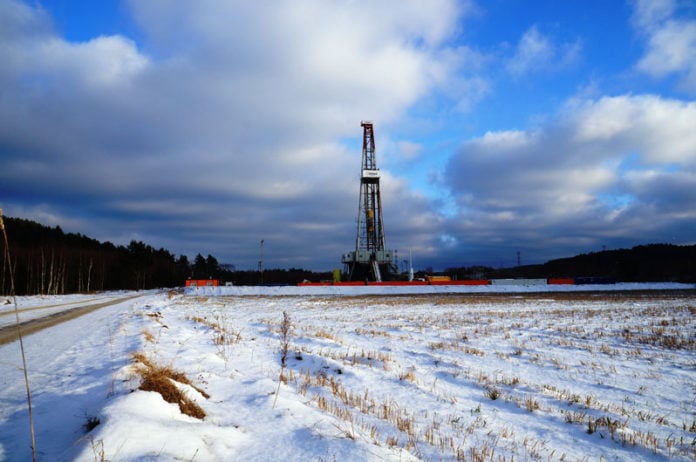Snubbing rigs are used for well completion and intervention operations where the pipe needs to be run into the live wells.
Live wells are the wells under pressure.
Similar to coiled tubing, on snubbing rigs work string is pushed into the well to overcome well pressure forces.
However, instead of continuous flexible pipe, snubbing rigs use conventional pipe which is screwed together with threaded connections.
Related: Working on a Drilling Rig: Positions and Responsibilities
Advantages of Snubbing Rigs
Can work on live wells – this eliminates the need to kill the well, makes operations cheaper, and prevents damage to the formation caused by kill mud.
Higher pump rates – bigger ID of the pipe allows higher pump rates than coiled tubing.
Faster – quicker rig up and rig down in comparison to conventional rigs or coiled tubing.
Small footprint – great for small leases or offshore operations.
Ability to rotate the pipe – in situations where the pipe needs to be rotated, the snubbing rig has an advantage over coiled tubing or wireline.
Higher set-down force at the tool – more force is transferred to the bottom hole assembly in comparison to coiled tubing. This is possible because the pipe used for snubbing is much stiffer than coiled tubing.
This also means that it takes much more force to buckle the pipe used for the snubbing. This usually allows snubbing rigs to get deeper in the well than coiled tubing units.
Related: What is Coiled Tubing?
Snubbing Rig Equipment
Slips – traveling slips are used for lifting and lowering the pipe. Stationary slips are used for securing the pipe while it is not moving.
Workbasket – a platform where operators handle the pipe, control BOPs, and the jack.
Control panel – used for controlling snubbing unit and pressure control equipment
BOPs (Blowout Preventers) – similarly to every other unit used to perform operations on live wells, BOPs are used for the well control. Since a lot of snubbing operations are performed on high-pressure wells, using the right BOPs is crucial.
When the pipe is run into the well, BOPs are closed and only open slightly to let the joints pass through.
Gin pole – used for lifting and lowering pipe and tools.
Pipe tongs – used for making pipe connections.
Power pack – provides hydraulic power to the unit.
Similar to coiled tubing in addition to downhole tools, a check valve is usually added to prevent any backflow.
Related: How Do Blowout Preventers Work?
Common Snubbing Operations
Milling – snubbing rigs are often used instead of coiled tubing to mill out plugs, frac ports, and cement in the well.
Running production tubing – snubbing rigs are also used to run production tubing in the well when it is ready for production.
Fishing – retrieving pieces of equipment and tools left downhole.
Drilling – snubbing units are sometimes used for underbalanced drilling.
What are Pipe “Heavy” and Pipe “Light”?
- Pipe light – pressure forces inside of the well are higher than the weight of the pipe. The pipe needs to be pushed into the well. This is called snubbing.
- Pipe heavy – the weight of the pipe is larger than the pressure forces in the well. This means the pipe needs to be supported to prevent it from falling into the well. This is called stripping.
The point where the pipe light becomes pipe heavy is called the balance point.
When the pipe just starts to run into the well under pressure, pressure forces will try to push the pipe out of the well.
However, as more pipe goes into the well, eventually the weight of the pipe might become higher than the well forces trying to push it out of the well.
Basic Requirements for Working On a Snubbing Rig
- Work baskets are usually located high up in the air and if you wanted to work on a snubbing rig you should be comfortable working at heights.
- Able to lift up to 50 lbs
- First aid and H2S certificates
- Driver’s license (Class 1 preferred)
- High School Diploma
- Related experience in oilfield (not required but preferred)
Read next: What is Wireline in Oil and Gas?
References:
https://en.wikipedia.org/wiki/Snubbing
https:/snubco.com/snubbing-customer-resources
